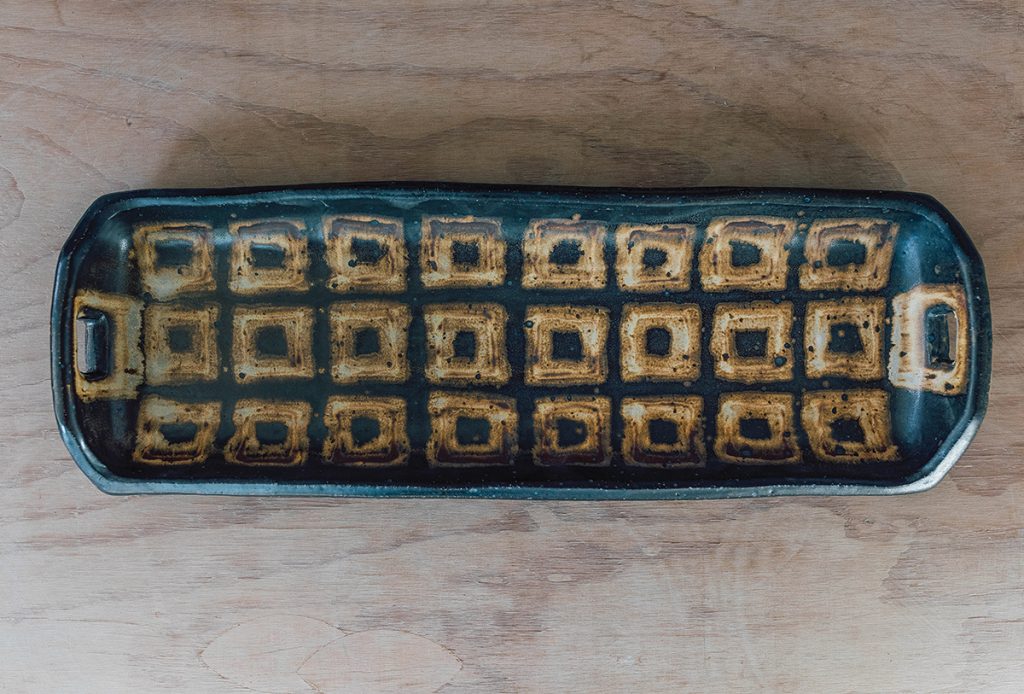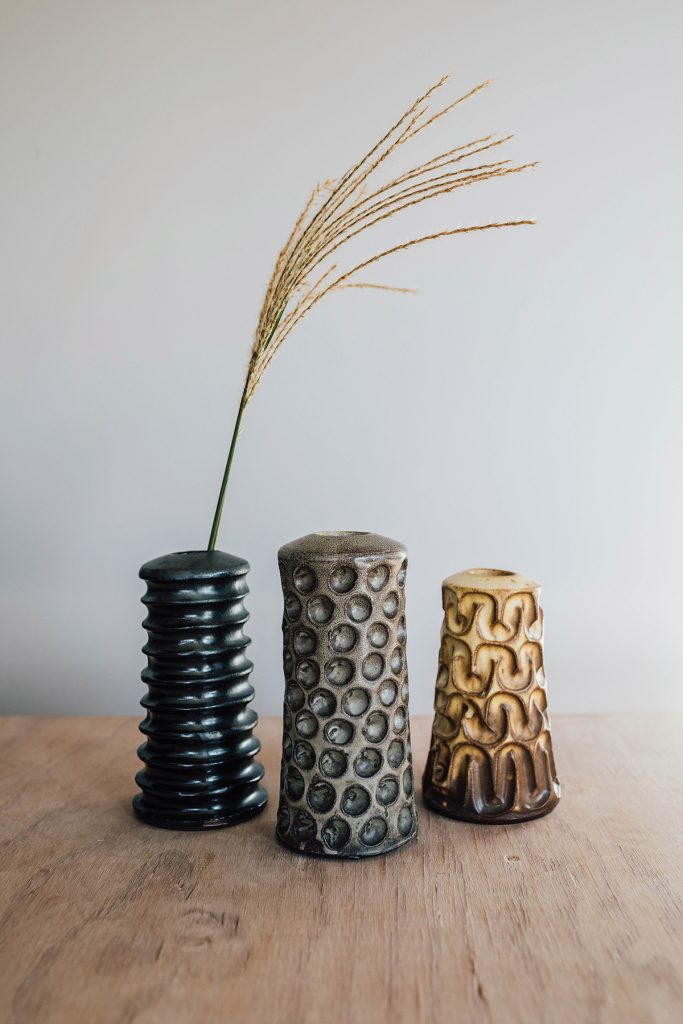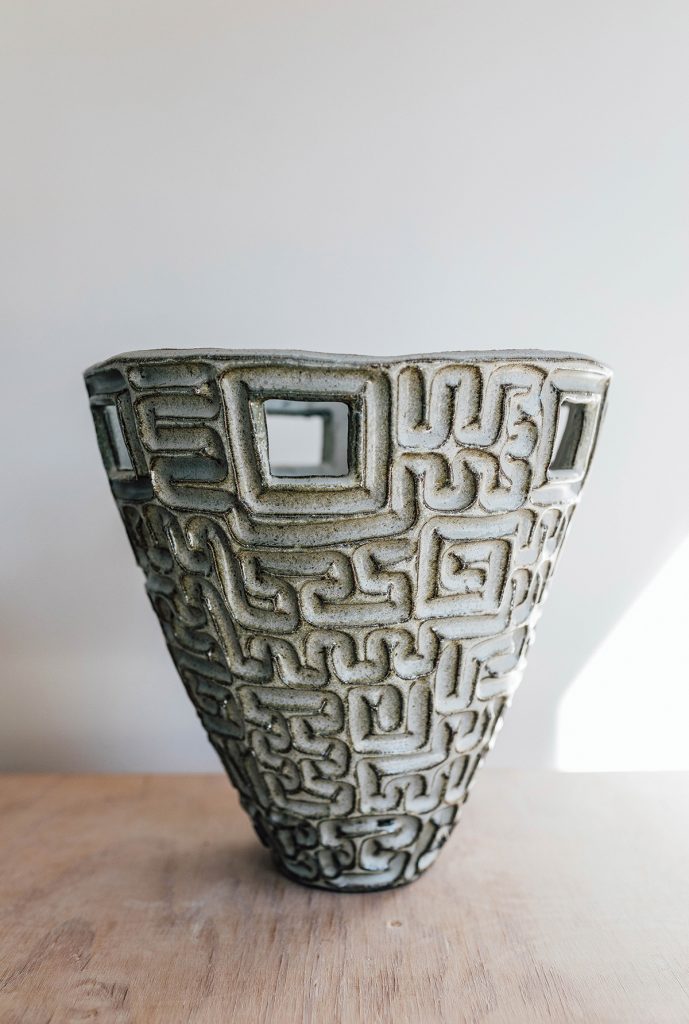
Photo by Rachel Pressley
“Functional pottery is a cool, subversive art form,” believes WNC potter/ceramicist Courtney Martin. “Without even knowing it, you internalize it. You hold it and cook with it and eat and drink out of it, and it’s so close to your body that there’s an intimacy there.”
Martin studied photography in high school, then attended the University of New Mexico, where, on a whim, she took a ceramics class that turned out to be a game changer. “Ceramics was challenging, which drew me in, and it’s rooted in function, so you can get around the fine-art aspect of it. When I was a photographer, I used to feel that I had to justify my photographs with a rather heady art conversation. With pottery I am able to make a beautiful object for daily use that has a purpose you don’t need to explain.”

Photo by Rachel Pressley
While in college, Martin studied with a potter in Mexico who was creating vessels for household use. “He was a poor cow herder who began making pots and decorating them, and then taught his whole village how to do that.” The economic boom from selling the pottery enabled the locals to bring electricity to their village and pave their roads. His living example inspired Martin, as did his geometric designs. She began to incorporate similar aesthetics, including African mud-cloth patterns, into her own work.
She creates all of her designs freehand, and uses latex and wax resists that can be peeled away to reveal unpainted or unglazed layers underneath. Each of her pieces typically has two glazes, plus a third color that appears where the glazes overlap. Meanwhile, the entire creative process tends to overlap in ways that resonate far beyond her studio.

Martin’s thickly textured and layered functional vessels encourage a personal connection.
Photo by Rachel Pressley
“The whole thing is wrapped up into my life through a holistic approach. There are people I don’t really know, but I think we have a relationship because what I make becomes such a big part of their lives. They use my work every day to feed their families and have that intimate connection and beautiful interaction of sharing meals. That’s such a lovely thing.”

Martin also strives to be ecologically and socially conscious, and to support small local businesses. “I use North Carolina clay, which is alive in a tactile sense in a way that commercial clays aren’t. It feels good, has more variables in texture, and has different minerals like iron and feldspar that come through in the firing.” She also uses a wood-fired kiln, and prior to COVID-19, was fueling it with waste wood that would otherwise be thrown away at the local sawmill. “Shortly after the lockdown I started using wood from our property, like dead-standing oak or fast-growing poplar, which has a less intense environmental impact.”

Photo by Rachel Pressley
Courtney Martin, Bakersville. Martin’s work is represented by Penland Gallery (penland.org/gallery) at Penland School of Craft, where she will teach an online class in February and March (penland.org/online). Martin will also have an online sale via the Southern Crossings Pottery Festival on Friday, March 5: sxpf.org. For more information, check out Martin’s website (www.courtneymartinpottery.com) and on Instagram: @courtneymartinpotter.